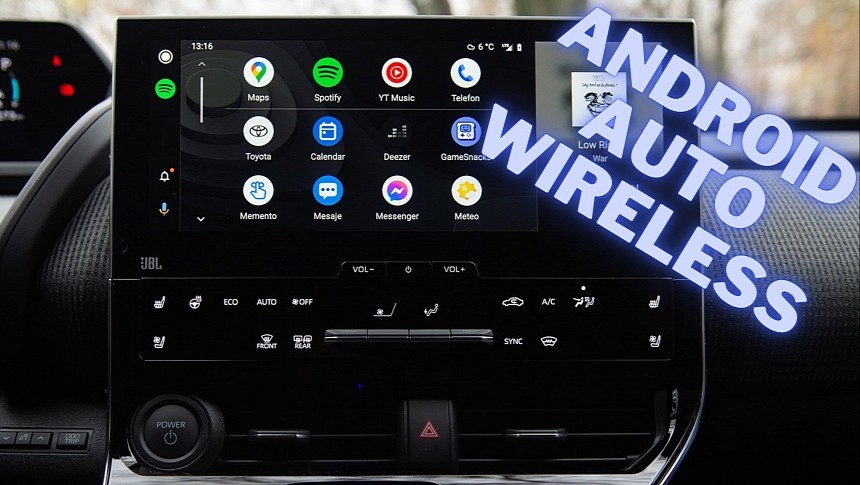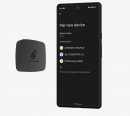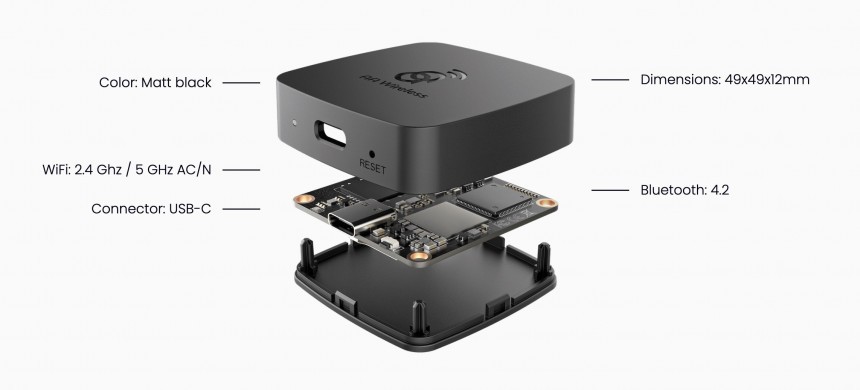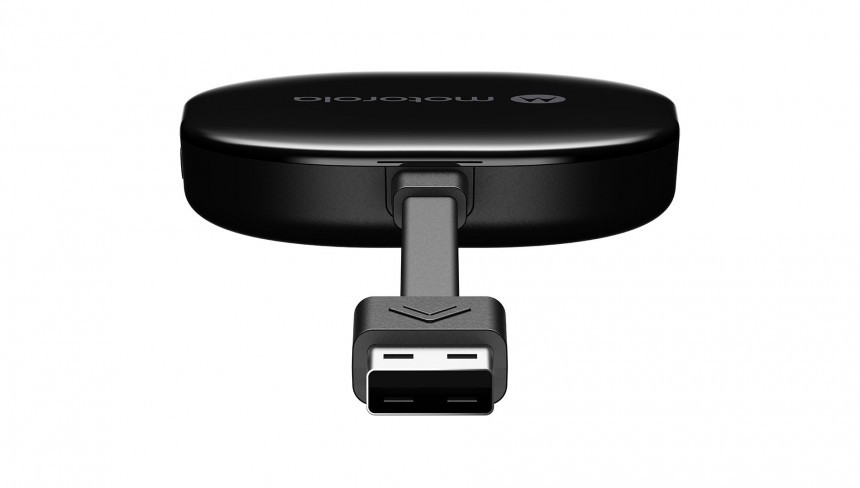Android Auto wireless comes with several big benefits over its wired sibling, but the most important is, without a doubt, the cordless connectivity.
If you've been using Android Auto with a cable for more than a few weeks, you probably know already that cords are very often the ones to blame for the encountered bugs.
For some reason, finding the right cable for Android Auto is extremely difficult. In theory, sticking with the original cable that came with the phone should be enough. Many users, however, figure out the hard way that even original cords stop working with Android Auto sometimes totally out of the blue.
As such, giving up on cables is something that eventually improves the experience with Android Auto. The wireless sibling ditches this major annoyance factor, as the phone can connect to a compatible head unit without the need for a cord.
While its name is very straightforward for tech-savvy users, it seems to cause confusion as to what's supposed to do in a car where Android Auto is already available.
An Android Auto adapter converts the wired version of the app to wireless. In other words, if your car already comes with Android Auto wired, it allows you to use the application without a cable connection.
First and foremost, these adapters must connect to your car using the Android Auto wired port. They come with an integrated USB cable, so drivers must plug them in just like they do with a mobile device.
The devices integrate Bluetooth and 5GHz wireless support. The first of them is required to connect to your smartphone, while the latter is a requirement of Android Auto wireless.
Once the Android Auto adapter is connected to the car and you start the engine, the device emulates a wired connection, making the media believe a smartphone is plugged in.
Users must connect their mobile devices to the adapter via Bluetooth. Thanks to the wireless connection, the adapter can then send and receive information from the smartphone, allowing for cordless screen projection on the media receiver.
As such, the adapter plays the role of a middleman whose only role is to receive wireless information from the mobile device and send it to the head unit (and the other way around). Because it plugs into the car's USB port, you can keep it connected to the media receiver at all times.
Depending on the model, an Android Auto wireless adapter could allow for the easy switch from one device to another using an integrated button. Given they come with a very small form factor, storing a wireless adapter in your car is extremely convenient, so drivers don't need to remove them when turning off the engine.
On the other hand, the main drawback is the delay that's sometimes experienced when starting the engine. Android Auto wireless adapters need anywhere between a few seconds and half a minute to load. As such, the Android Auto interface won't show up on your car screen instantly but only after a noticeable waiting time.
In addition, those drooling after Android Auto wireless might not necessarily be so impressed with the cordless connection, given the battery drain. The battery impact is often significant, so a cord is still needed unless you have a wireless charger in your car.
While Android Auto wireless helps users give up on cables, using a cord could still be necessary for an extra charge. If you keep the phone in your pocket, the battery level could drop significantly, leaving you with an empty battery when you arrive at the destination. Eventually, connecting a charger and using a cord would still be required.
For short journeys in the city, Android Auto wireless is very useful. Someone working in the delivery business would be able to use Android Auto on their head units while keeping the phone in their pocket or backpack. The experience overall is a lot more convenient, especially when someone makes frequent stops. Sure enough, the slow loading time could eventually cause more frustration, but this also depends on the device you choose to power the whole thing.
An Android Auto wireless adapter typically costs less than $100 and works with the majority of Android devices and cars where Android Auto wired is supported.
For some reason, finding the right cable for Android Auto is extremely difficult. In theory, sticking with the original cable that came with the phone should be enough. Many users, however, figure out the hard way that even original cords stop working with Android Auto sometimes totally out of the blue.
As such, giving up on cables is something that eventually improves the experience with Android Auto. The wireless sibling ditches this major annoyance factor, as the phone can connect to a compatible head unit without the need for a cord.
What's an Android Auto wireless adapter?
The first thing I will detail for you is the concept of an Android Auto wireless adapter.While its name is very straightforward for tech-savvy users, it seems to cause confusion as to what's supposed to do in a car where Android Auto is already available.
An Android Auto adapter converts the wired version of the app to wireless. In other words, if your car already comes with Android Auto wired, it allows you to use the application without a cable connection.
How an Android Auto wireless adapter works
AAWireless, Motorola’s MA1, and the rest of the adapters that helped grow this product category use a similar approach. Everything has been developed to be as straightforward as possible, so the process requires only minimal configuration on the user's side.First and foremost, these adapters must connect to your car using the Android Auto wired port. They come with an integrated USB cable, so drivers must plug them in just like they do with a mobile device.
The devices integrate Bluetooth and 5GHz wireless support. The first of them is required to connect to your smartphone, while the latter is a requirement of Android Auto wireless.
Once the Android Auto adapter is connected to the car and you start the engine, the device emulates a wired connection, making the media believe a smartphone is plugged in.
Users must connect their mobile devices to the adapter via Bluetooth. Thanks to the wireless connection, the adapter can then send and receive information from the smartphone, allowing for cordless screen projection on the media receiver.
As such, the adapter plays the role of a middleman whose only role is to receive wireless information from the mobile device and send it to the head unit (and the other way around). Because it plugs into the car's USB port, you can keep it connected to the media receiver at all times.
The pros and cons of Android Auto wireless adapters
While the number one benefit of an Android Auto wireless adapter is more than obvious, such a device also comes with extra features.Depending on the model, an Android Auto wireless adapter could allow for the easy switch from one device to another using an integrated button. Given they come with a very small form factor, storing a wireless adapter in your car is extremely convenient, so drivers don't need to remove them when turning off the engine.
On the other hand, the main drawback is the delay that's sometimes experienced when starting the engine. Android Auto wireless adapters need anywhere between a few seconds and half a minute to load. As such, the Android Auto interface won't show up on your car screen instantly but only after a noticeable waiting time.
In addition, those drooling after Android Auto wireless might not necessarily be so impressed with the cordless connection, given the battery drain. The battery impact is often significant, so a cord is still needed unless you have a wireless charger in your car.
While Android Auto wireless helps users give up on cables, using a cord could still be necessary for an extra charge. If you keep the phone in your pocket, the battery level could drop significantly, leaving you with an empty battery when you arrive at the destination. Eventually, connecting a charger and using a cord would still be required.
For short journeys in the city, Android Auto wireless is very useful. Someone working in the delivery business would be able to use Android Auto on their head units while keeping the phone in their pocket or backpack. The experience overall is a lot more convenient, especially when someone makes frequent stops. Sure enough, the slow loading time could eventually cause more frustration, but this also depends on the device you choose to power the whole thing.
An Android Auto wireless adapter typically costs less than $100 and works with the majority of Android devices and cars where Android Auto wired is supported.














